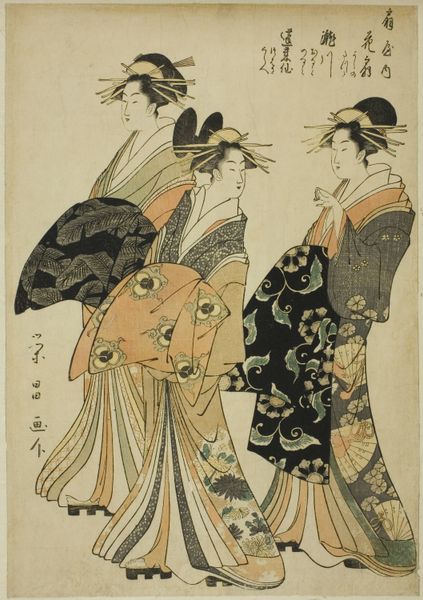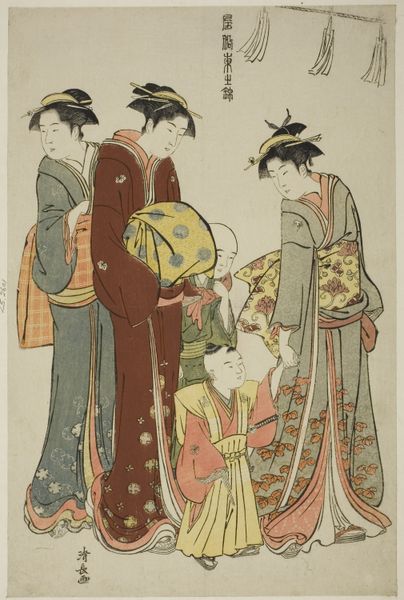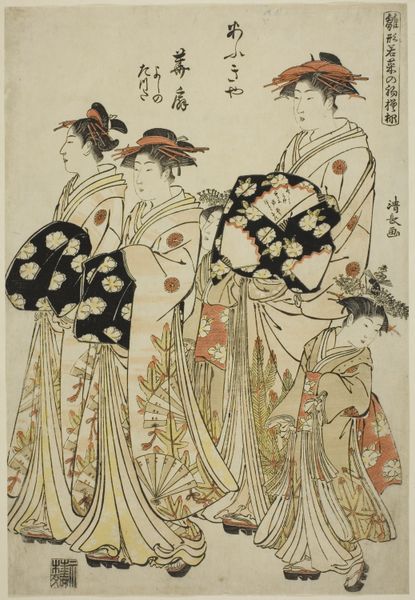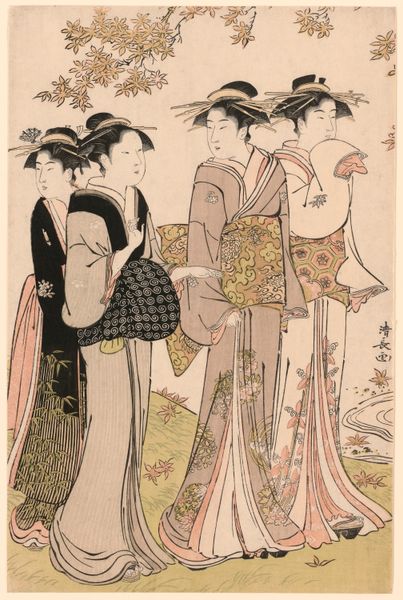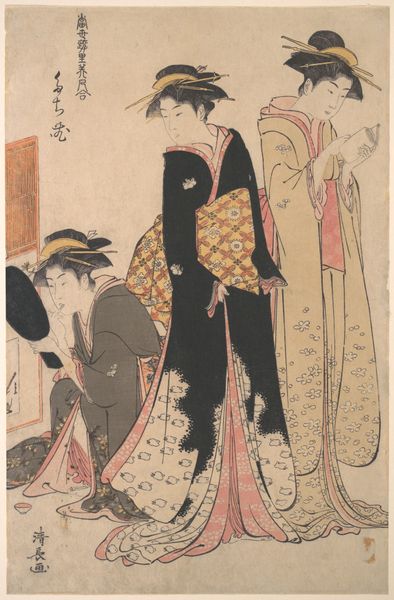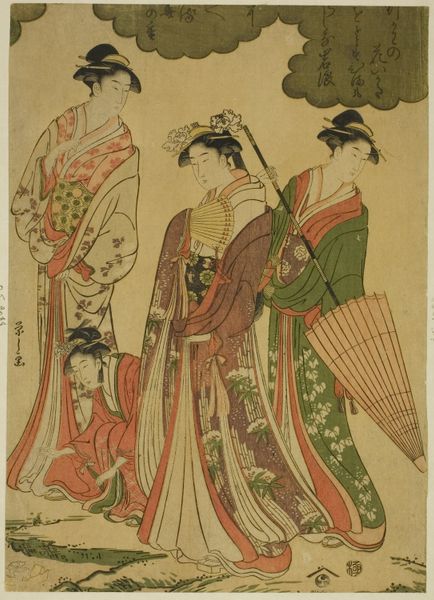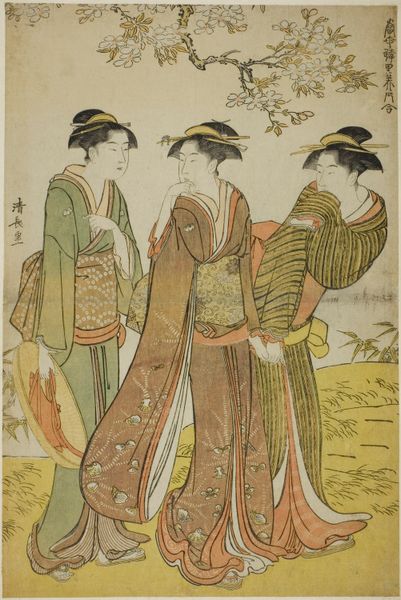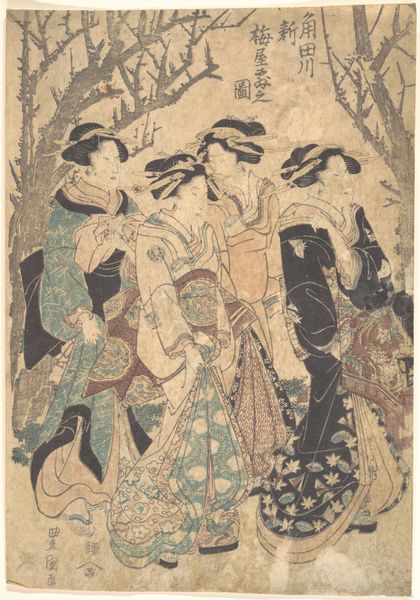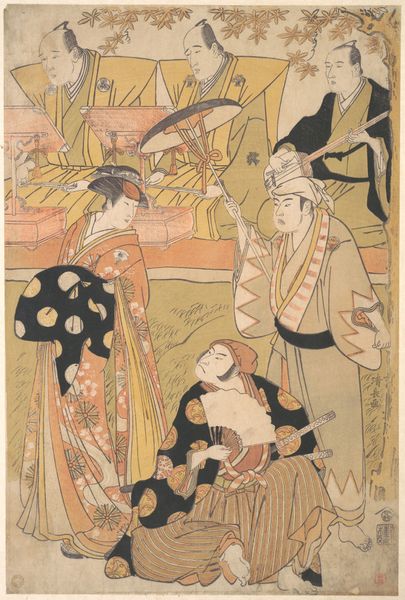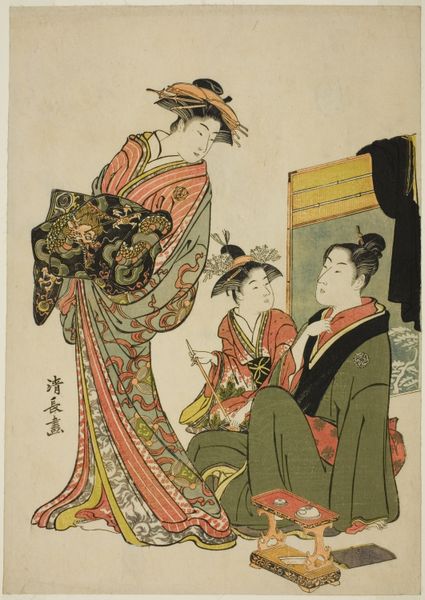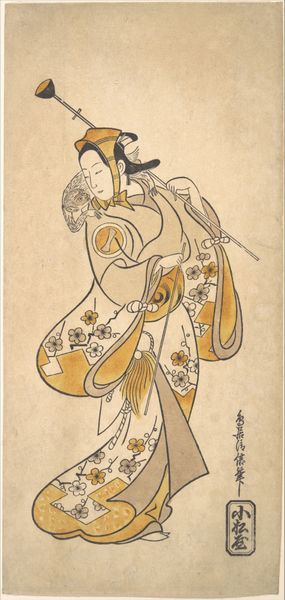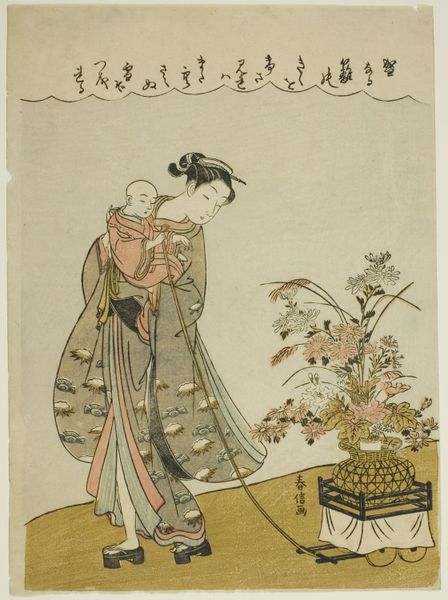
The Oiran Hanaogi of Ogiya attended by Two Shinzo and Her Kamuro Yoshino 1796 - 1816
0:00
0:00
#
toned paper
#
pastel soft colours
# print
#
asian-art
#
japan
#
personal sketchbook
#
historical fashion
#
wedding around the world
#
men
#
watercolour bleed
#
watercolour illustration
#
cartoon carciture
#
watercolor
#
bridal fashion
Dimensions: H. 14 5/8 in. (37.1 cm); W. 9 1/2 in. (24.1 cm)
Copyright: Public Domain
Editor: We're looking at "The Oiran Hanaogi of Ogiya attended by Two Shinzo and Her Kamuro Yoshino," a print made sometime between 1796 and 1816 by Utamaro II. I’m struck by the way the patterns on the kimonos create a sense of depth, even though it's a relatively flat image. What are your initial thoughts on this print? Curator: I immediately notice the materials and processes involved. Woodblock printing was a highly collaborative effort, demanding skilled carvers and printers in addition to the artist's design. The registration of colors, the quality of the paper – likely sourced and processed with particular techniques - and the ink all speak to a sophisticated system of production and distribution. Editor: That's fascinating. So, it's not just about Utamaro’s artistic vision but also about the labor and material realities that went into creating it. Curator: Exactly. Think about the sourcing of pigments, perhaps even specific to certain regions, and the skill involved in layering colors to achieve those subtle tones. The very act of creating multiples disrupts our Western notion of the unique, precious artwork. Was this "high art" or a commodity for a specific social class? Editor: I hadn't considered it that way. So, it challenges the traditional boundaries between art and craft? Curator: Precisely. The subject matter, an Oiran, further complicates this. The Oiran were entertainers, but also tastemakers and powerful figures within the pleasure quarters. This print becomes an object reflecting societal values and class structure as much as it does individual artistic expression. What kind of audience was it produced for? How might its distribution have reinforced certain social hierarchies or offered avenues for subversion? Editor: It’s amazing how much context is embedded within the materials and production of a single print. Thanks, that gives me a whole new appreciation for it! Curator: Indeed, focusing on materiality helps us move beyond simply admiring its aesthetic qualities and engages us in a deeper understanding of its historical and social life.
Comments
No comments
Be the first to comment and join the conversation on the ultimate creative platform.
